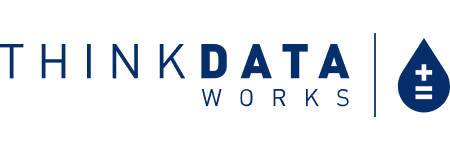4 min read
As we work together to find ways to #flattenthecurve and ensure we’re keeping our family, friends, and neighbours safe, offices are closing and employers are encouraging their teams to work remotely.
For modern businesses, this shouldn’t be difficult to implement. The recent surge in helpful project management apps lets us stay connected no matter what happens. Many organizations, such as ours, already have “work from home” days hardwired into our office culture.
This might be sufficient when you work remotely a day or two every week, but what about an extended period of working separately from your colleagues? How can we best structure our schedules to maximize our productivity while still focusing on the mental and physical health of ourselves and our loved ones?
As an organization that’s always leaned into flexible working conditions, we believe that working remotely shouldn’t mean sacrificing productivity. Here are some tried and true methods to get the most out of working from home.

1. Stay the course
Big, unprecedented shift in the way you’re doing business? Now is not the time to change how your team works. As everyone’s schedule gets upended, it’s critically important to maintain a sense of normalcy. Routine is golden.
If you already perform daily check-ins or scrum, make sure to do them at the same time, with the same stakeholders, but keep it to once a day. Don’t start scheduling a bunch of unnecessary meetings to make it feel as though you’re all in the same place. You aren’t, and that shouldn’t be a problem.
While working remote, the meetings that could have been emails really need to be emails. As people adjust to the new schedule, it may be tempting to book quick 15 minute sessions to sync with teammates to make sure you’re all rowing in the same direction. Even though they’re bite-sized, these 15 minute sessions start to add up, and if they’re dispersed throughout the day it becomes impossible to get a good head of steam up on that project you’re trying to finish.
If you need to sync with several people individually, set aside an “office hour” at some point in the day and keep to it.
2. Limit the chatter
The downside of collaboration hubs like Slack (which we use and love) is that there’s a fine line between staying in touch and, well, wasting time. For people who love to socialize, it can be difficult to adjust to a work environment that doesn’t have the friendly buzz of an office, but turning a tool like Slack into a social network is going to grind productivity to a halt.
The biggest benefit of working from home is that you’re able to do what we call “Heads Down” work, meaning that you can tackle large, complex tasks without being distracted. On heads down days, we’ll often snooze Slack, email, etc. to make sure we’re able to focus.
That said, it’s important to make sure that people are still staying in touch with each other. Consider making a Water Cooler channel in Slack where people can “meet up” after lunch or check in when they’re having a coffee. If you’re cooped up at home, it’s important to maintain a sense of community; just make sure you’re chiseling out time for it rather than having it take over your day.
3. Trust your team
Working from home hasn’t become mainstream due to a lack of trust. People don’t like to admit it, but trust is the main reason why remote working policies don’t get off the ground. Despite the fact that two-thirds of managers report an increase in productivity when employees are allowed to work remotely, there’s often someone somewhere in the organization who thinks that working from home is the same thing as giving people a day off.
Let’s make one thing clear: if you don’t trust someone to work from home, you shouldn’t have hired them in the first place.
Remote work might feel uncomfortable at first, so give people the space and resources they need to feel at ease. You might be surprised at how much people get done when they’re encouraged to make working from home a personalized experience.

4. Give ownership, not accountability
We try to avoid the term 'accountability.' It implies a negative, whose-neck-is-on-the-line mentality that doesn’t jive with our culture. Instead, we talk a lot about ownership. Ownership is the positive version of accountability – it means that you have the privilege of understanding all the moving pieces in a project and get to feel a sense of accomplishment when it’s seen through to completion.
When working remotely, ownership is even more important. Don’t give people less control, give them more. See what they’re capable of.
If you’re using a project management tool like Monday, Asana, Jira, you may want to break down large tasks into more granular pieces – this will help everyone have insight into how projects are unfolding or if they’re stuck. We tend to forget how often we tap a teammate on the shoulder to check in on their progress. In the absence of that constant feedback loop, project management tools provide the insight that everyone needs to do their best work.
5. Set up the home office
One of the difficult things about working from home is that it’s your home. We’re often very attached to where we live as being separate from where we work, and it might feel wrong to take a client call from your couch or send a pull request from your dinner table.
On a work from home day, some of our team members will take a walk around the block before opening up their laptop. Even though they’re not going anywhere, the activity of walking for 10 minutes acts as a kind of commute, and by the time they get back they’ve “arrived at work.” Others have a “no sweatpants” rule to make sure it still feels like a working day.
It can also help to sit on a chair you don’t normally use or set up your computer in a part of your home where you don’t spend a lot of time. These might seem like silly adjustments, but they tell our brain that this context is different from our home life. Once you set it up as a habit, that chair or part of your home will become synonymous with a working space.

Transparency is Key
When it comes to working remotely, the most important thing teams can do is communicate effectively. From the top down, everyone should know what your remote working policies are, why you’re enacting them, and what you hope to accomplish with them. By being transparent, you’re opening up a line of communication and making sure everyone understands what is happening, and why. No one wants to feel like they’ve been dropped into an unfamiliar situation without any context, so make sure there’s an open and honest dialogue.
The benefit of transparency is that it breeds transparency. If your organization is honest with its people, your people will be honest about what they need and how they’re doing. No one should feel like they can’t go pick up their grandparent from the clinic or take the kids to the park because it falls within “working hours.”
By baking transparency into the DNA of your organization, you’re establishing an open air environment for asking questions, getting feedback, and giving updates, ensuring that everyone is taking care of themselves while putting in a good day’s work.
Do you want to help ThinkData Works revolutionize how people use data? Want to have fun with some of the coolest nerds around? Check our current career openings and see where you fit in (or simply reach out to us via LinkedIn or Instagram, we’d love to hear from you!)

4 min read
How to better leverage data for risk management and crisis response

3 min read



